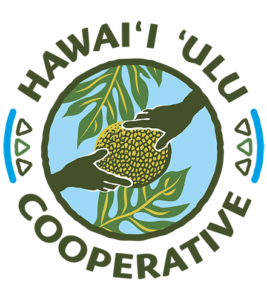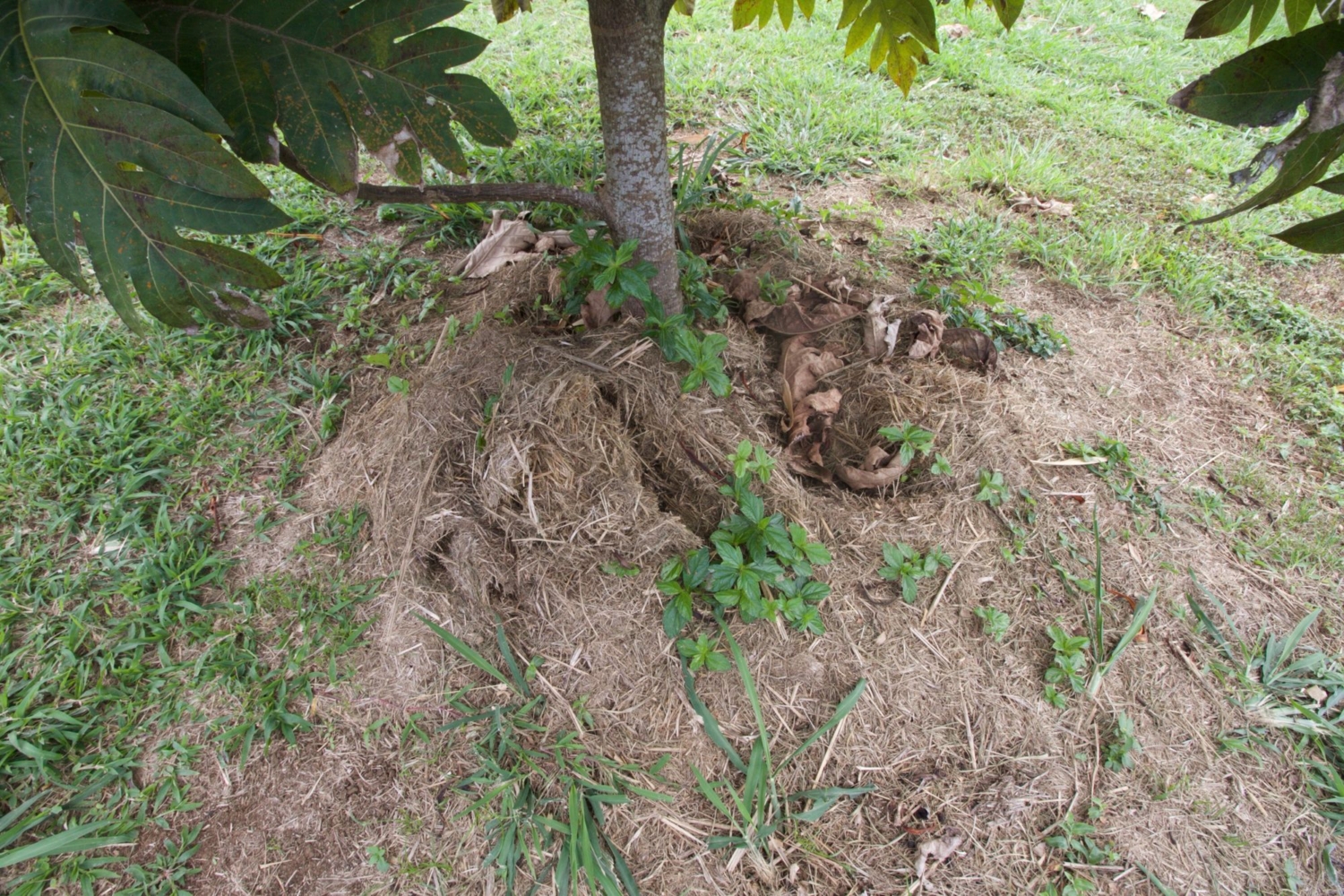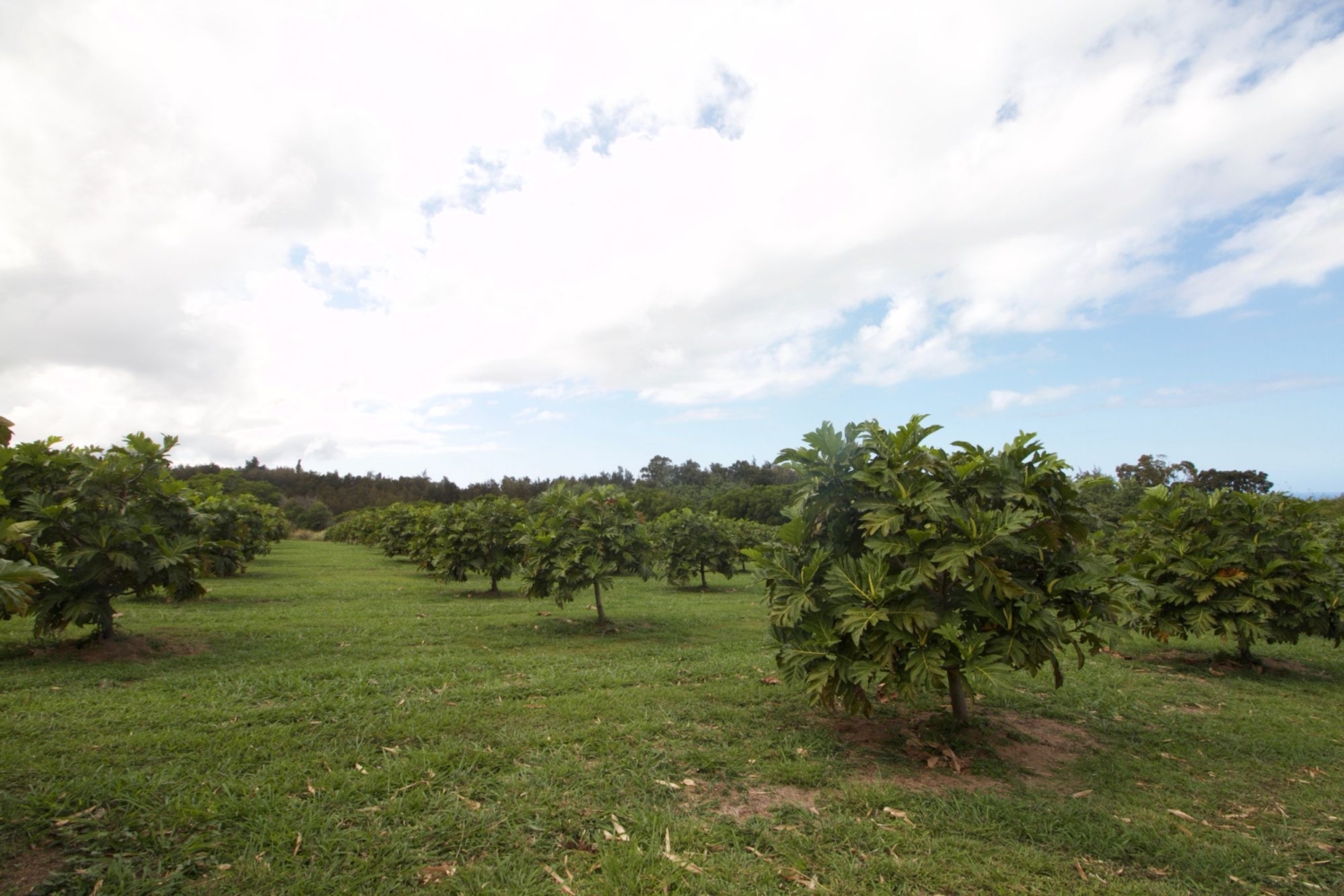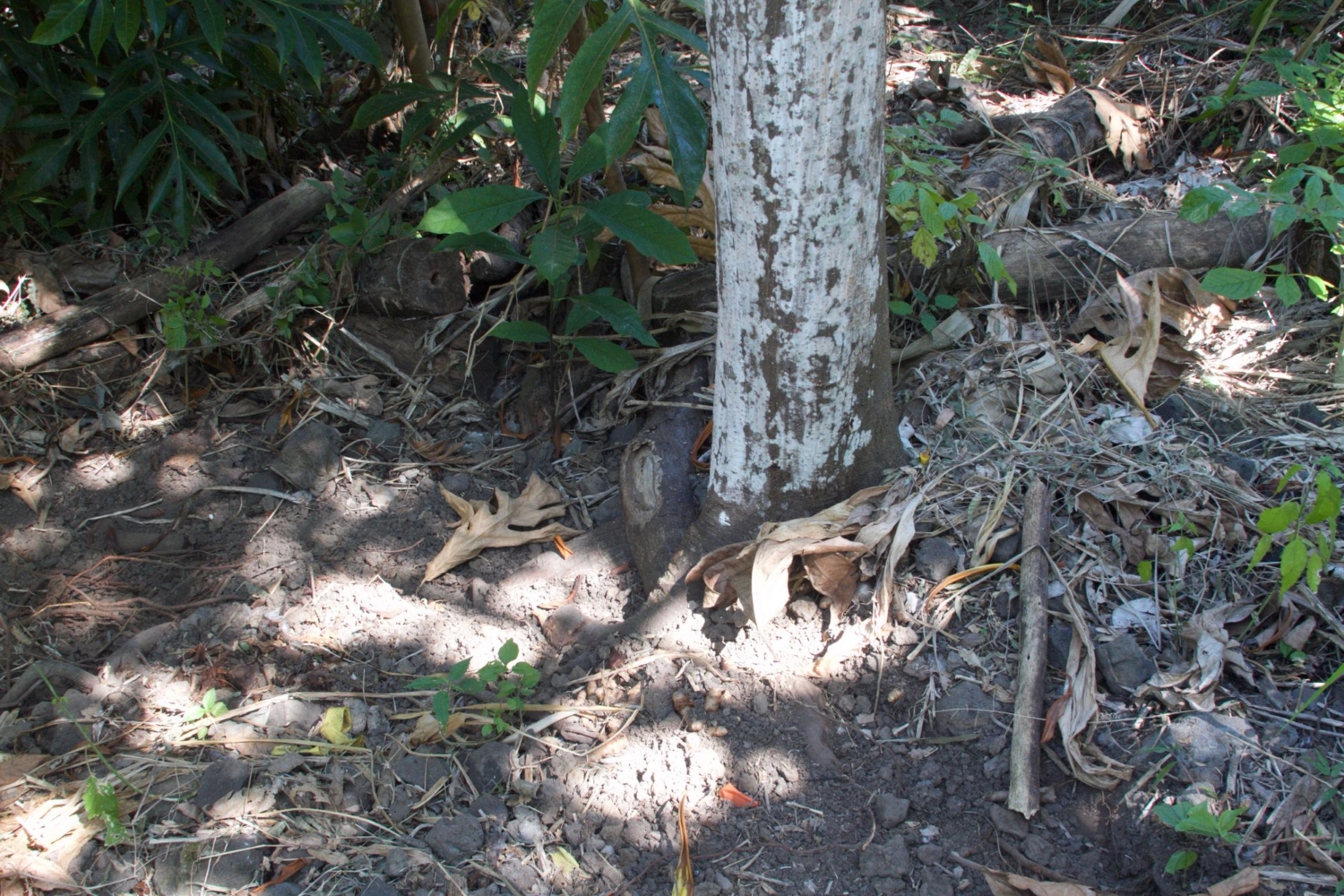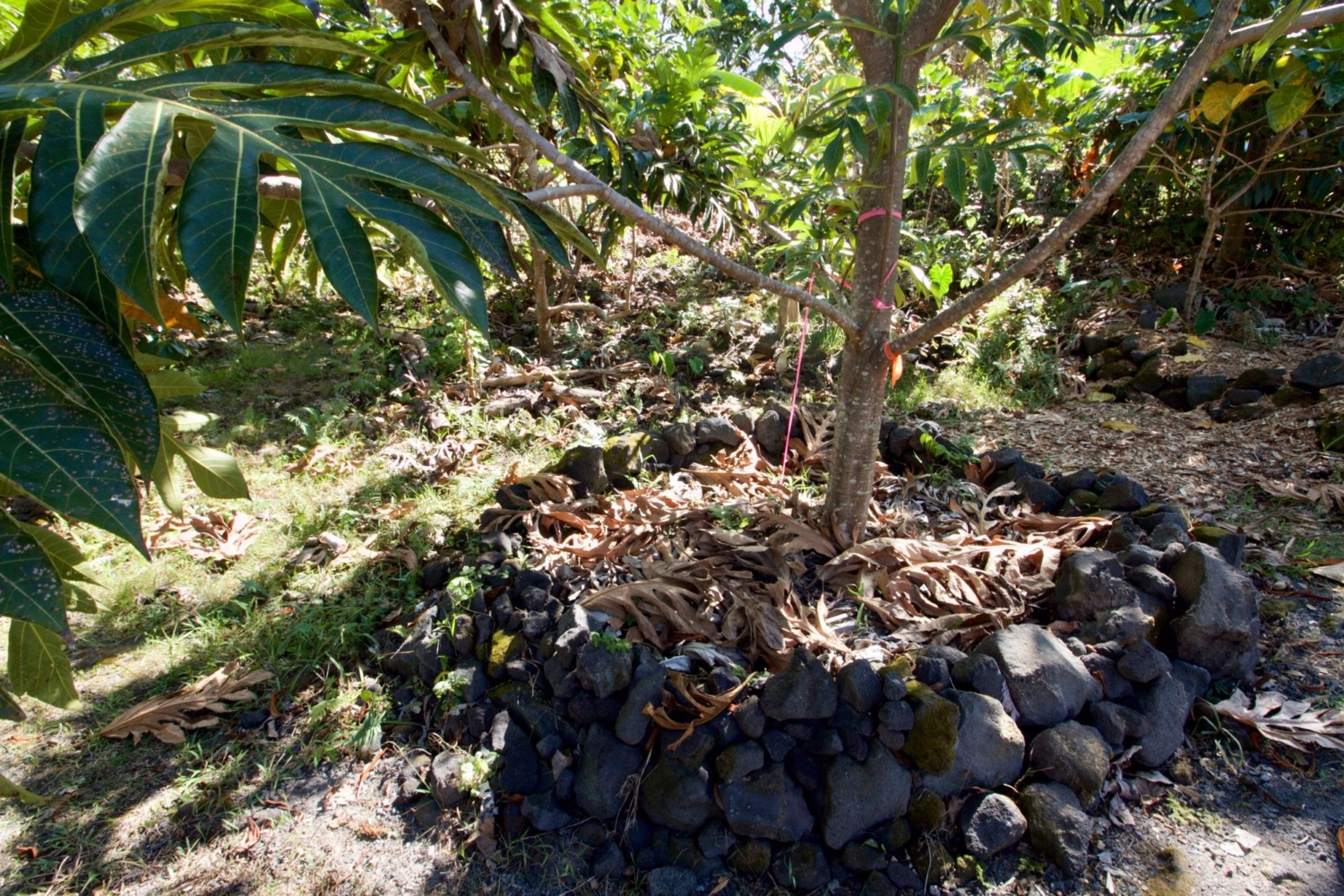ʻULU PRODUCTION PRIMER
Ground Prep & Tree Establishment
Tilling is not required; however, breadfruit is a shallow rooted plant and might benefit from gently softened top soil.
Break through the subsoil if there is compaction and mix in compost and amendments.
Rough, fungal-dominant compost is generally ideal for trees. Breadfruit forms associations with abuscular mycorrhiza which improve nutrient uptake.
Dig a hole at least 2x the size of the transplanted root mass in order to avoid transplanting shock, make sure that soil is not dehydrated at the time of planting. Water the hole before planting, if standing water persists add some drainage material such as cinder.
In commercial plantings in low-rainfall areas or regions with a long dry season, irrigation is an asset, especially in the early years.
Maintaining micronutrients during establishment stage is considered critical for long term tree health. Add amendments such as biochar, chicken manure, lime, or gypsum to the hole – outside of the root ball area so that the roots reach out for nutrients and water.
3-year-old tree, heavily mulched with grass clippings.
Breadfruit orchard, northwest side of Hawaii’s Big Island. Drier than Hilo, not as dry as Kona.
Breadfruit can grow in rocky, nutrient-poor soils, as seen here at a farm in Kona. However: in conditions like these, the onset of fruiting may be delayed, and trees will likely abort fruit during drought if there is no irrigation.
Tree in Kona, surrounded with lava rock, and mulched heavily with whole branches. Breadfruit can grow on marginal land, though more management is required for optimal yields.
NEXT: Soil and Tissue Testing
